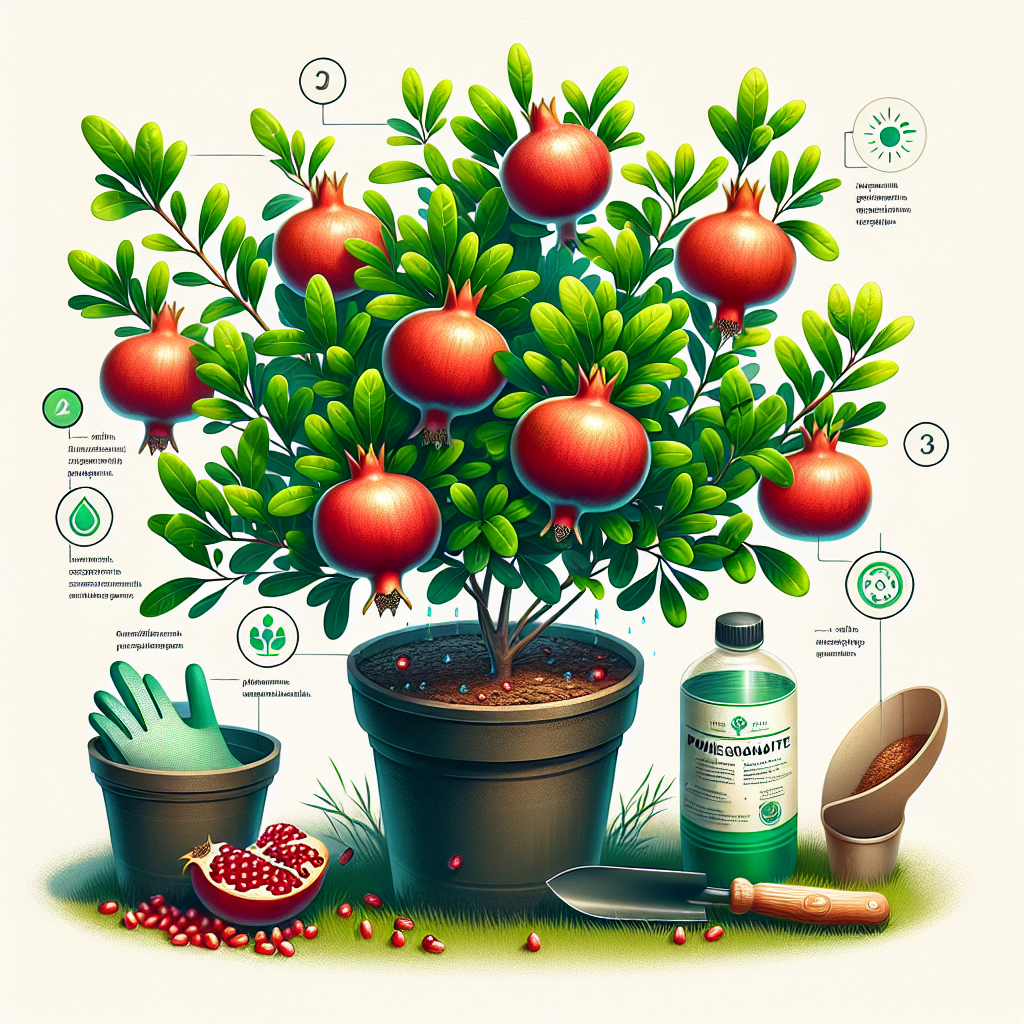Tips for Successfully Growing Pomegranates at Home
Pomegranates are not only delicious but also packed with health benefits. With their vibrant red color and sweet-tart taste, they make an excellent addition to juices, salads, and desserts. While these fruits are commonly found in stores, growing your own can be a rewarding experience. If you’re interested in cultivating pomegranates at home, here are some tips to help you succeed.
1. Choose the right variety:
There are several pomegranate varieties available, each with its own distinct flavor and characteristics. Some popular options include ‘Wonderful,’ ‘Ambrosia,’ ‘Haku Botan,’ and ‘Salavatski.’ Consider your climate and space constraints when selecting a variety. Consult a local nursery or horticulturist to determine which type is best suited for your region.
2. Pick the perfect location:
Pomegranate trees thrive in warm climates with full sun exposure. They require at least six hours of direct sunlight daily to produce an abundant crop. Select a spot in your garden that receives maximum sunlight throughout the day.
3. Soil preparation:
Pomegranates prefer well-draining soil that is slightly acidic (pH between 5.5 to 7). Before planting, amend the soil by adding organic matter such as compost or well-rotted manure to improve drainage and nutrient content. Avoid heavy clay soils, as excessive moisture retention can harm the roots.
4. Planting:
Plant pomegranate trees in early spring when the soil has warmed up, but frost is still not a concern. Dig a hole twice as wide and deep as the root ball of your young sapling or transplant. Place the tree in the hole so that it sits at the same depth as it was in its container or nursery bed. Backfill with soil, gently tamping it down around the base to eliminate air pockets.
5. Watering:
While pomegranates are drought-tolerant, regular watering is essential during their initial establishment period. Provide ample water to keep the soil evenly moist until the tree becomes established, usually within the first year. After that, reduce watering frequency to prevent overwatering and root rot.

6. Pruning and training:
To promote healthy growth and maintain an attractive shape, prune your pomegranate tree regularly. Prune during late winter or early spring before new growth emerges. Remove weak or crossing branches and maintain an open-centered shape to improve airflow and sunlight penetration. Additionally, trim back any suckers that arise from the base of the tree.
7. Fertilization:
Pomegranate trees benefit from regular fertilization to ensure optimal fruit production. Apply a balanced fertilizer, with equal parts nitrogen (N), phosphorus (P), and potassium (K), in early spring and again in summer. Follow the manufacturer’s instructions for application rates based on your tree’s size and age.
8. Pest control:
Pomegranates are relatively pest-resistant; however, occasional issues may arise. Aphids, thrips, and scale insects may attack the leaves or fruit. Monitor your trees regularly, looking for signs of infestation such as sticky residue or distorted growth. If necessary, treat affected areas with organic insecticidal soap or horticultural oil.
9. Harvesting:
The best indicator of fruit ripeness is color; pomegranates should be fully red when harvested. Depending on the variety, this usually occurs between September and January. Gently twist the fruit from its stem or use pruning shears to avoid any damage to neighboring fruits or branches.
10. Storage:
If you have harvested more pomegranates than you can consume immediately, store them in a cool location with good ventilation for up to two months. Alternatively, extract the seeds (arils) and freeze them for future use in smoothies, desserts, or as garnishes.
Growing pomegranates at home can be a delightful and rewarding endeavor. By following these tips, you’ll be on your way to enjoying the juicy, flavorful fruits of your labor. Remember to stay patient and give your pomegranate tree the care and attention it needs to thrive.













